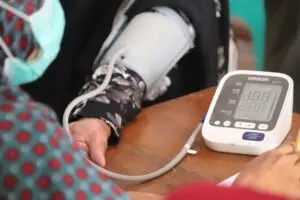Return to CVD Roadmaps Home
The World Heart Federation Roadmap for Secondary Prevention of Cardiovascular Disease identifies roadblocks and suggests potential solutions to improve cardiovascular health and help reach the target set out in the Sustainable Development Goals: achieve a 30% reduction in NCDs, including CVD, by 2030.
The first edition of the WHF Secondary Prevention was launched on 13 February 2015 at the Policy Forum on the Secondary Prevention of Cardiovascular Disease, and published in Global Heart.
An update was developed in 2023, led by Co-chairs Fernando Lanas and Clara Chow. It highlights the new literature and guidelines since 2015, including the 2021 European Society of Cardiology (ESC) Guidelines on Cardiovascular Disease Prevention in Clinical Practice, the inclusion of single-pill combinations for hypertension on the World Health Organization Essential Medicines’ list in 2019, of polypills in 2023 and various advances in digital health.
Overview
The updated WHF Roadmap for Secondary Prevention in CVD aims to drive policy change for the reduction of cardiovascular morbidity and mortality in people with ASCVD, through a conceptual framework for the development of “sustainable” and “scalable” national policies and health systems approaches.
Challenges
Each year, 20.5 million people die from cardiovascular disease (CVD), close to one-third of all deaths worldwide. Most of the CVD burden is due to atherosclerotic cardiovascular diseases (ASCVD), as well as other important CVD manifestations such as heart failure and atrial fibrillation. ASCVD are the major causes of premature death, disability, and healthcare expenditure globally and include coronary artery disease, cerebrovascular disease, peripheral artery disease, and atherosclerotic aortic disease.
Secondary CVD prevention refers to preventing heart attack and stroke through drug therapy and counselling for high-risk individuals – such as those with previous events or known ASCVD. Effective strategies for secondary prevention management exist, however, barriers such as lack of access to healthcare and medicines, clinical inertia, lack of primary care infrastructure or built environments that support preventive cardiovascular health behaviours impact their implementation.
Definition
Secondary Prevention refers to preventing heart attack and stroke through drug therapy and counselling for high-risk individuals – such as those with previous events or known cardiovascular disease. Secondary cardiovascular prevention can be defined as any strategy aimed to reduce the probability of a recurrent cardiovascular event in patients with known atherosclerotic cardiovascular disease, including coronary artery disease, cerebrovascular artery disease, peripheral artery disease, and atherosclerotic aortic disease.














